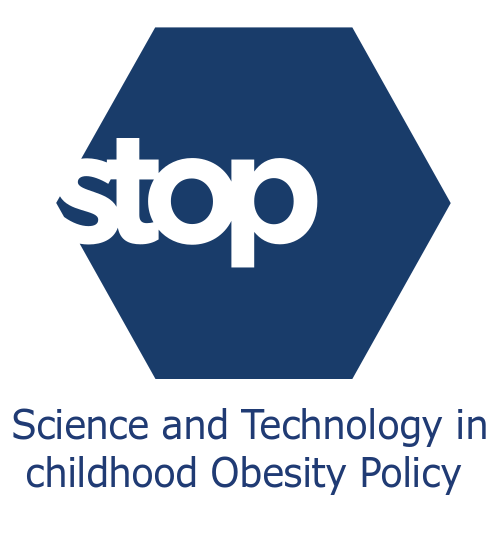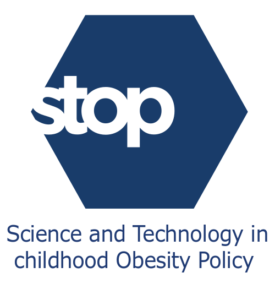D4.1 – Remarkable lack of evidence on inequalities in paediatric obesity treatment
The STOP project team have undertaken a systematic review of children’s treatment for obesity, looking at inequalities in successful treatment, along with inequalities in access and adherence to treatment programmes. We focused attention on treatment directed at younger children (3 – 10y) provided through clinical services. We examined 634 existing systematic reviews and found 64 eligible for inclusion, and then examined the 1699 primary studies cited in the 64 reviews, of which 81 studies were eligible for inclusion. Out of this large quantity of material we found very little high-quality information: many studies had inherent bias due to selection of families with higher levels of general functioning and more resources to make changes to their health behaviour. Only five primary studies analysed outcomes by some form of social disparity, and these gave inconsistent results. Treatment adherence was also poorly studied, but appears to be affected by the ability to attend repeated sessions over extended periods of time, the lack of rapid results for the child and subsequent loss of interest, and the dynamics of families in different cultural environments and under economically stressful conditions. Again, there were few analyses of adherence metrics stratified by social group.
The lack of evidence is extraordinary, given the overwhelming evidence of social disparities in obesity prevalence, and the likelihood that these disparities will have a bearing on treatment efficacy. Many studies, paid for with public funds or philanthropic donors, are collecting the relevant information, but are not using it. With a high level of policy concern over health inequalities, it is imperative that research funders make sure that such information is a key focus of future research.
D7.1 – Effects of policies on children’s physical activity
This report synthesised the evidence on the effects of two key groups of policies on physical activity of children: 1) school-based physical activity interventions for 6-12-year-old children; 2) policies on built environment and active transport. After a detailed examination of more than 250 reports on school-based physical activity policies, the findings of our analysis support the overall effectiveness of these interventions in the prevention of child overweight and obesity. Several features that enhance the effectiveness of these interventions were identified such as inclusion of a dietary component and a duration over at least one year. At the same time, these interventions appear to be very safe as very little adverse outcomes were detected. On the other hand, despite the lack of studies that assessed intervention effects in vulnerable groups of children, available evidence suggests that at present these interventions might not be fully equitable, exhibiting less effect in both economically deprived children and migrants. Next, after a careful investigation of 61 studies, active travel interventions were found to be successful in increasing the odds of active commuting to school in primary school children, but scant evidence was found for adolescents. The environmental factors that promote active travel in children include safety, social interactions, and the presence of facilities to assist walking and cycling, although the importance of these factors may vary between different geographical and cultural contexts.
D8.1 – Social disparities in childhood obesity treatment
The primary purpose of the review was to examine (1) the evidence for differential effectiveness of interventions to treat paediatric obesity in relation to these various potential sources of inequity, hereinafter referred to as ‘social disparities’, and (2) evidence on the challenging phases of the interventions such as recruitment, adherence and follow-up in relation to social disparities. This review focused on social disparities (defined here as potential disparities in health which are linked to ethnicity, migrant status, educational status, household income, health insurance status or other socio-economic measure) in relation to paediatric obesity treatment and outcome, as provided through health care services to younger children (defined here as children aged between 3 and 10 years). Of the 81 studies identified and examined, there still remained only a small amount of evidence, and this was generally not of high quality. Thus the review reveals a remarkable lack of high-quality evidence concerning the influence of social disparities on the effectiveness of paediatric obesity treatment, and on recruitment, drop-out and follow-up issues in relation to social disparities. The authors conclude that there is a clear and continuing high level of policy concern over health inequities and universal health coverage, at global, European and member state level. Action to mitigate inequalities needs evidence, yet this need for evidence is not being met. Many studies, paid for with public funds or philanthropic donors appear not to be collecting the relevant information, and here it is imperative on the research funders to make sure that such information is a key focus of future research.
Upcoming deliverables to be submitted
D1.3 – Ethics Report (November 2019)
D3.2 – Report on completion of analyses for the molecular signature for obesity and its validation, including microcirculation and telomere length (November 2019)
D3.4 – Report on gut hormone measurements (November 2019)
D7.2 – Peer-reviewed publication on the relative effectiveness of interventions on physical activity, physical fitness and sedentary behavior (November 2019)
D11.6 – STOP intellectual property strategy for managing IP ownership and exploitation of in-project and postproject output (November 2019)

